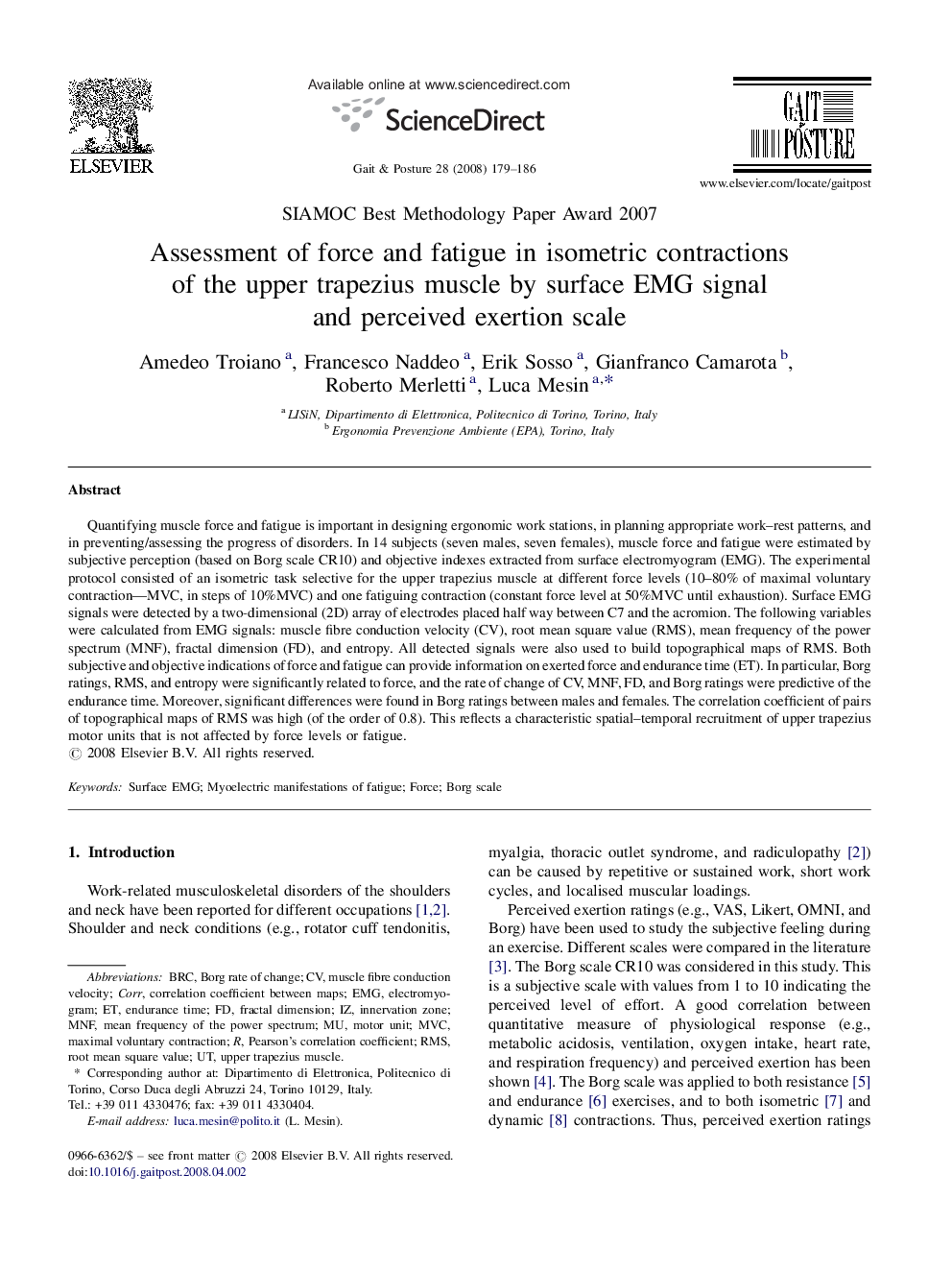| کد مقاله | کد نشریه | سال انتشار | مقاله انگلیسی | نسخه تمام متن |
|---|---|---|---|---|
| 4057532 | 1265696 | 2008 | 8 صفحه PDF | دانلود رایگان |

Quantifying muscle force and fatigue is important in designing ergonomic work stations, in planning appropriate work–rest patterns, and in preventing/assessing the progress of disorders. In 14 subjects (seven males, seven females), muscle force and fatigue were estimated by subjective perception (based on Borg scale CR10) and objective indexes extracted from surface electromyogram (EMG). The experimental protocol consisted of an isometric task selective for the upper trapezius muscle at different force levels (10–80% of maximal voluntary contraction—MVC, in steps of 10%MVC) and one fatiguing contraction (constant force level at 50%MVC until exhaustion). Surface EMG signals were detected by a two-dimensional (2D) array of electrodes placed half way between C7 and the acromion. The following variables were calculated from EMG signals: muscle fibre conduction velocity (CV), root mean square value (RMS), mean frequency of the power spectrum (MNF), fractal dimension (FD), and entropy. All detected signals were also used to build topographical maps of RMS. Both subjective and objective indications of force and fatigue can provide information on exerted force and endurance time (ET). In particular, Borg ratings, RMS, and entropy were significantly related to force, and the rate of change of CV, MNF, FD, and Borg ratings were predictive of the endurance time. Moreover, significant differences were found in Borg ratings between males and females. The correlation coefficient of pairs of topographical maps of RMS was high (of the order of 0.8). This reflects a characteristic spatial–temporal recruitment of upper trapezius motor units that is not affected by force levels or fatigue.
Journal: Gait & Posture - Volume 28, Issue 2, August 2008, Pages 179–186